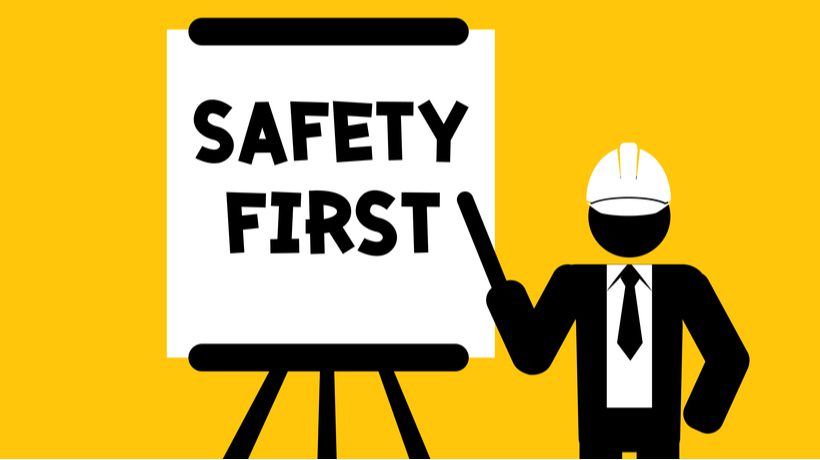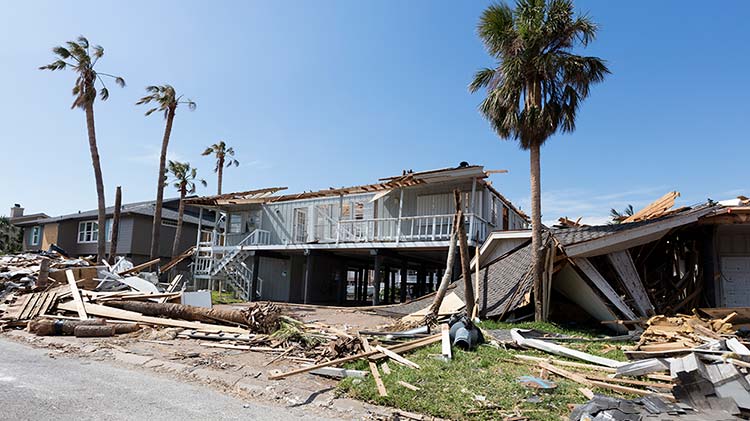Staying Safe After a Hurricane: Essential Post-Storm Safety Tips
Hurricanes bring with them powerful winds, heavy rain, and flooding, often leaving behind widespread destruction. While the storm itself poses immediate dangers, the period following a hurricane can be just as hazardous. It’s crucial to know how to navigate the aftermath safely. Here’s what to do after a hurricane to protect yourself, your family, and your property.
1. Stay Informed and Patient
Once the hurricane passes, don’t assume the danger is over. Stay tuned to emergency alerts and official updates from local authorities through a battery-powered or hand-crank radio, or a mobile phone if service is available.
- Wait for the “All Clear”: Only return to your home if authorities declare it safe. Flooding, downed power lines, and debris can still make travel dangerous.
- Be Aware of Secondary Hazards: Tornadoes, flash floods, or landslides may occur even after the hurricane has moved on .
Tip: Avoid driving through floodwaters, as only a few inches of moving water can sweep away a vehicle .
2. Check Your Surroundings for Immediate Dangers
Once it’s safe to step outside, inspect your surroundings cautiously. The aftermath of a hurricane often leaves behind dangerous conditions.
- Beware of Downed Power Lines: Always assume fallen power lines are live and extremely dangerous. Report them immediately to local utility companies and keep your distance .
- Watch Out for Floodwaters: Floodwaters can be contaminated with sewage, chemicals, or debris. Avoid walking or wading through standing water, which may hide sharp objects, unstable surfaces, or even electrical hazards .
- Check for Gas Leaks: If you smell gas or hear a hissing sound, evacuate your home immediately and call emergency services .
3. Inspect Your Home for Damage
After confirming that it’s safe to return, carefully inspect your home for damage before settling back in. Here are some areas to focus on:
- Roof and Foundation: Check for signs of structural damage, such as cracks, sagging, or shifted beams. Don’t enter if there’s significant damage.
- Windows and Doors: Look for broken glass, bent frames, or other hazards that could cause injury.
- Flood Damage: If floodwaters entered your home, be aware of potential electrical issues. Don’t turn on electricity or use electrical appliances until a professional has inspected the system .
- Mold Growth: Moisture from flooding can lead to mold within 24-48 hours. Open windows to ventilate your home and remove wet materials as soon as possible .
Tip: Take photos of the damage for insurance claims before making any temporary repairs .
4. Use Generators Safely
If your home has lost power, you may need to use a portable generator. However, improper use of generators can lead to deadly carbon monoxide (CO) poisoning. To avoid this:
- Place Generators Outside: Always keep generators outdoors, at least 20 feet away from windows, doors, and vents to prevent CO from entering your home.
- Never Use in Enclosed Spaces: Avoid using generators inside your home, garage, or even a partially enclosed space .
- CO Detectors: Ensure your home is equipped with working carbon monoxide detectors to alert you of dangerous gas buildup .
5. Watch for Wildlife and Insects
Flooding and high winds can displace wildlife, including snakes, alligators, and other animals that may seek shelter in your home or yard.
- Stay Clear of Wild Animals: Don’t approach or try to move wildlife. Contact local animal control for assistance if needed .
- Mosquito Control: Stagnant water left behind by hurricanes can be a breeding ground for mosquitoes. Use insect repellent and remove standing water from containers like buckets or birdbaths .
6. Prioritize Health and Sanitation
The risk of injury or illness increases after a hurricane due to unsafe conditions, compromised sanitation, and lack of clean water. Here’s how to minimize these risks:
- Boil Water Notices: If local officials issue a boil water advisory, make sure to boil tap water for drinking, cooking, and brushing teeth, or use bottled water .
- First-Aid: Treat any minor injuries immediately to prevent infection, especially cuts or puncture wounds from debris. If you sustain a serious injury, seek medical help as soon as possible .
- Food Safety: Discard perishable food if your home has been without power for more than four hours. Foods that have come in contact with floodwaters should also be thrown away, as they may be contaminated .
7. Document Damage and File Insurance Claims
As you assess damage to your property, document everything thoroughly for insurance purposes:
- Take Photos and Videos: Capture images of damage from multiple angles and make a list of affected items.
- Temporary Repairs: Make temporary repairs to prevent further damage, but avoid making permanent repairs until an insurance adjuster has evaluated your property .
- File Your Claim: Contact your insurance company as soon as possible to start the claims process. Keep copies of all documents and receipts for repairs .
8. Emotional Well-being and Support
Recovering from a hurricane can be an emotionally draining process. It’s important to take care of your mental health during this time:
- Take Breaks: The physical and emotional strain of cleaning up and dealing with loss can be overwhelming. Take regular breaks to rest and recharge .
- Reach Out for Help: Don’t hesitate to ask for help from friends, neighbors, or local recovery organizations. Many communities offer mental health services or emotional support groups following a natural disaster .
9. Help Your Community Recover
Once you’ve secured your own safety, lend a hand to others who may need assistance:
- Check on Neighbors: Especially the elderly, disabled, or those who may be living alone. They may need extra help cleaning up or finding resources .
- Volunteer: Many organizations offer volunteer opportunities to help with hurricane recovery efforts. This can range from clearing debris to distributing supplies .
Recovering from a hurricane takes time and patience, but by staying cautious and following these guidelines, you can minimize risks to your safety and health. Remember, the days and weeks after a hurricane can present new dangers, so be prepared, stay informed, and reach out for help when needed.
Stay safe, and remember that recovery is a process, but with the right steps, you and your community will rebuild stronger than ever.
For more tips, follow Shorelyx Properties on our Social Media accounts, or visit our website (https://shorelyx.com/)
Sources:
- National Hurricane Center – Stay informed about post-hurricane hazards. (https://www.nhc.noaa.gov/index.shtml)
- FEMA – Guidelines on re-entering homes safely after hurricanes. (https://www.fema.gov/)
- CDC – Health and safety tips for post-storm sanitation. (https://www.cdc.gov/index.html)
- Red Cross – Advice on securing homes and navigating post-hurricane hazards. (https://www.redcross.org/)



